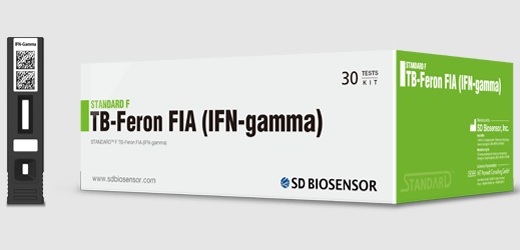Rapid Screening Test Detects Chlamydial Infection
By LabMedica International staff writers
Posted on 26 Mar 2013
A rapid nonculture method for detection of Chlamydia trachomatis has been developed based on the measurement of specific enzymatic activity in urogenital tract specimens.Posted on 26 Mar 2013
The method is based on the level of the activity of α-mannosidase, a gylcoside hydrolase involved in the maturation and degradation of glycoprotein-linked oligosaccharides, on its specific chromogen.
Scientists at Zhengzhou University (China) evaluated the performance of a method, which measured the α-mannosidase activities of C. trachomatis serotype D strain and 29 standard strains related to clinical urogenital pathogens. They also assayed 553 urogenital tract specimens via cell culture method and ligase chain reaction method (LCR), adopting an expanded gold standard.
For the 203 male cases, three urethral discharge specimens from 151 outpatients or three prostate massage liquid specimens from 52 outpatients were collected with sterile rayon swabs. For the 350 female cases, three cervical secretion specimens were collected from 232 outpatients, or three vaginal secretion specimens were collected from 118 outpatients, with sterile rayon swabs using vaginal forceps.
The enzymatic method was based on the substrate 6-chloro-3-indolyl-α-D-mannoside and the chromogenic reagent contained fast violet B salt (J&K Chemical; Shanghai, China; www.jkchemical.com). The result was considered to be positive when the optical density (OD) at 512 nm was greater than 0.150, if the color changed from colorless to red or brown after 15 minutes of incubation at 37 °C. Cell culture and LCR method were used to evaluate the clinical performance of the enzymatic method.
Of the 553 clinical samples, 132 samples were positive with the OD ranging from 0.161 to 1.955, and 421 samples were negative with OD ranging from 0.013 to 0.142. The sensitivity of the enzymatic method was 91.5%, and the specificity of this method was 90.0%.
The authors concluded that they had demonstrated that there were no significant differences between the enzymatic method and the reference method if prostate specimens were excluded. Therefore, α-D-mannosidase activity may be a useful marker for C. trachomatis in urogenital tract specimens, with many advantages, such as its speed, ease of use, convenience, and specialized equipment is not essential. The study was published on January 24, 2013, in, the BioMed Central journal BMC Infectious Diseases.
Related Links:
Zhengzhou University
J&K Chemical














